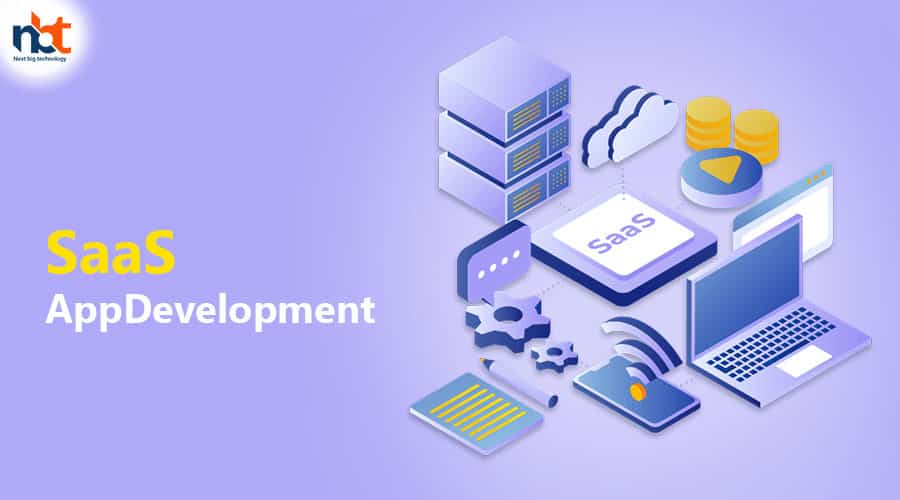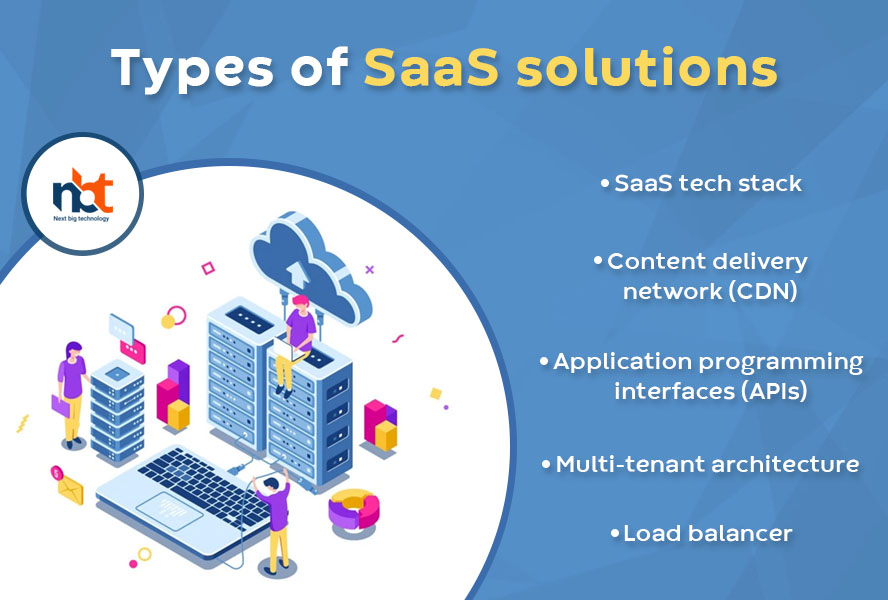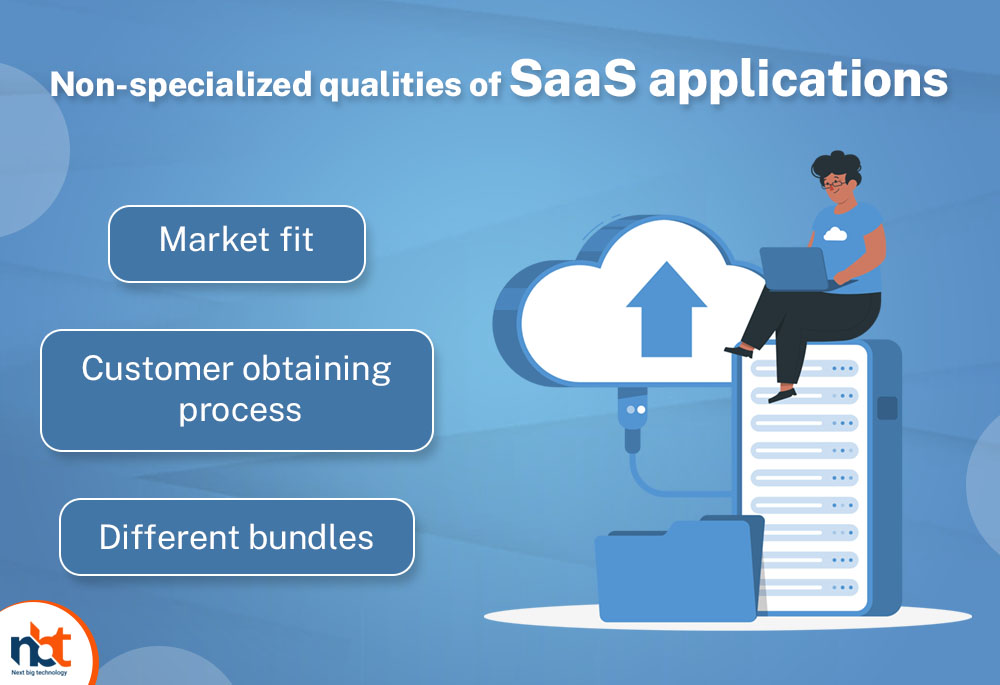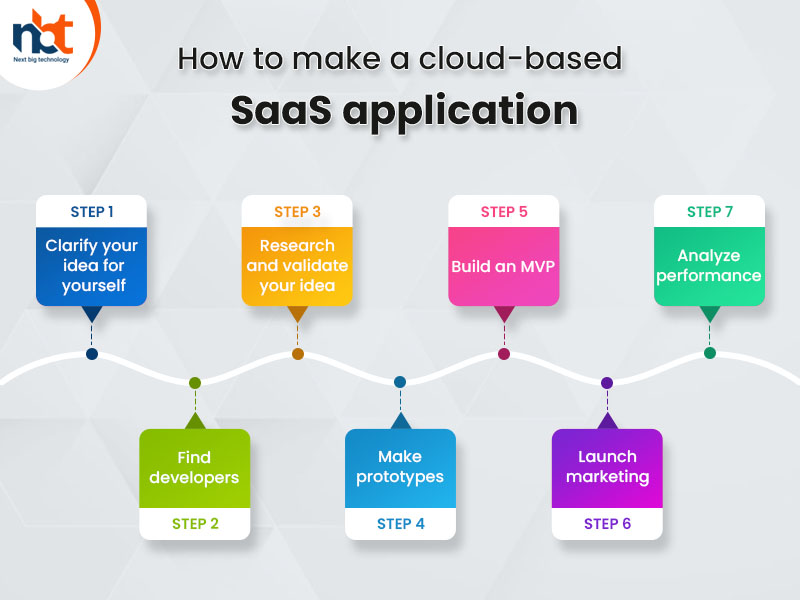SaaS apps have become increasingly popular due to their ease of access and use, as they eliminate the need for installation or downloads on individual devices. Implementing SaaS models in app development has numerous advantages including easy scalability, cost-effectiveness, regular updates, collaboration capabilities and universal accessibility. Creating successful SaaS applications requires sound technical skills and knowledge of cloud computing, web technologies and security considerations. A thorough understanding of user experience and marketing strategies is also critical in ensuring a project’s success by offering valuable features that meet end-users’ demands. In today’s digital age, integrating scalable SaaS solutions in any organization’s workflow can be key to achieving sustainable growth and long-term success.
Table of Contents
What is SaaS App Development?
Software as a service is an approach to accessing applications on the Internet. Unlike the conventional model, the programmes are stored in remote cloud storage that is accessible via the web or an API. SaaS programmes are also referred to as web-based, on-demand, or hosted programmes. No matter what we want to label it, these things are kept on the servers of providers. Incorporating security, operability, and availability, the vendor manages access to the software.
To stay ahead of the competition and remain noticeable among the numerous SaaS products available, developers must persistently endeavour to enhance their SaaS app after its release. By consistently improving and incorporating cutting-edge features, developers should be able to maintain their competitive edge and expand their user base. It is vital to provide significant capabilities that line up with the needs of the clients. In addition, it is essential to make certain that updates function promptly and effectively to avoid any issues or setbacks that could lower user satisfaction. For any SaaS product to be successful, it’s imperative to uphold a steadfast commitment to frequent improvements and modifications.
Also Read : What is B2B SAAS? Top B2B Companies
Step-By-Step Guide to SaaS App Development
-
Planning
The foundation for creating a successful application is sound planning. In addition to utilizing the appropriate technologies, a SaaS application’s success also requires in-depth market research, audience analysis, defining the app’s purpose, and consideration of its key features. While stakeholders typically undertake the responsibility of planning, you can also seek assistance from your development partner. A proficient IT firm will furnish you with business analysis services to probe your situation and offer you the optimal solutions for entering and thriving in the targeted market.
-
Collecting Requirements
Before commencing with the development of a SaaS app, it is imperative that you gather your comprehensive project requirements. In order to do so, it is crucial to curate a list of features that may vary in nature. Typically, app features are bifurcated into two categories, namely basic and advanced. The minimum viable product (MVP) or basic features are fundamental in nature and are aimed at fulfilling the users’ basic requirements. Conversely, the advanced features are designed to enhance user engagement by introducing exciting and innovative functions.
-
Application Design
Creating an outstanding UI/UX design for your SaaS product is imperative once the list of required features has been curated. In today’s digital age, users have high standards, and they are inclined to abandon websites and applications with unappealing and confusing designs. Therefore, to ensure profitability, designing a SaaS app with a user-friendly interface is important. The design creation process demands time and investment, commencing with wireframes, which depict the elements’ layout on the app screen. Wireframes are typically monochromatic and represent the screen’s interconnectivity. Subsequently, designers develop a visual style for the app by selecting suitable colours, fonts, and other graphic components. Afterward, they design all the app screens and their respective conditions, followed by the creation of a clickable prototype. Finally, the last phase of the UI/UX design process involves handing over the design to SaaS app developers.
Also Read : SaaS Application Development: How to develop a SaaS App
-
Software Architecture
The software architecture serves as the cornerstone of a successful app that fulfils the technical prerequisites of stakeholders. SaaS architecture is cloud-based, which implies that data storage, databases, and services are hosted in the cloud rather than on physical servers. Amazon Web Services (AWS) is the most prevalent choice for constructing cloud-based architecture. Whether AWS or an alternative service is chosen for a SaaS project, a skilled software architect ought to be involved in formulating the high-level architecture design.
-
Development and Testing
During this stage, the SaaS developers undertake the task of working on both the front-end and back-end of the app. In parallel, the quality assurance (QA) engineers carry out an exhaustive check to ensure that each piece of functionality works flawlessly, both in independently and as a part of the overall system. The terminal stage of the development involves the deployment of the MVP version of a cloud-based SaaS app to end-users. At this point, a DevOps professional or another team member with relevant experience prepares all the new code components to be deployed and integrates the entire codebase into production.
Also Read : How to Come Up with An Amazing SaaS Application? A Complete Guide!
-
Maintenance
Once your Minimum Viable Product (MVP) becomes accessible to users, it is crucial to shift your focus towards evaluating its performance in the real world. This essential phase involves a detailed assessment process that begins with gathering user feedback through direct communication, surveys, or any other relevant method. Comprehensively analysing this collected information will help you identify the areas that need improvement or enhancement, such as design, performance, or functionality. Moreover, it is critical to discover and address the new features that users may be seeking to improve their overall experience with your product. The technical expertise and insight of your SaaS developers can provide the necessary guidance on how to plan for future functionality and effectively address any existing bugs or issues.
Also Read : What Are Some SaaS Product Ideas That Will Take Off In The Next Few Years?
Conclusion
While cloud apps might not be the best option in every company situation, the Software as a Service (SaaS) model has acquired a lot of popularity in recent years due to the benefits it offers to both users and software developers. By adhering to these above-mentioned essential steps, you’ll be well-equipped to make your mark in the rapidly expanding world of SaaS solutions.
Thanks for reading our post “Saas App Development 2025“. Please connect with us to know more about SAAS App Development Services.















